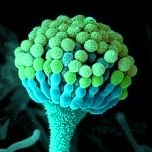Kenya: High levels of aflatoxins remain

Almost half of animal feed for livestock in Nairobi is contaminated with toxins that might be dangerous to humans.
According to a study by the Kenya Agricultural Research
Institute (Kari), Nairobi University and the Livestock Ministry, half of the
feedstuffs contain aflatoxins. Mr John Kariuki, the lead researcher said that
commercial and home-made rations were highly contaminated with mycotoxins. This has significant impact on
health of both livestock and human beings, he
said.
Study on feed concentrates
The
researchers studied 100 farmers in Nairobi and sampled a wide range of feed
concentrates used on the farms, which included, cotton seed meal, maize germ,
commercial dairy meal and home made rations, of which at least 50% was
contaminated with aflatoxins. Farmers in the areas covered are big users of
commercial feeds, poultry and breweries by-products.
Feed safety
is lacking
In 2004, a
large outbreak
of aflatoxins caused over 100 deaths in Kenya. Also more than
100 people died after consuming contaminated grains in 2005, while another 50 have died this
year. The team however said there was little evidence of contamination in milk, meat
or eggs. “At the moment, Kenya is unable to export meat and meet
products to western countries due to stringent requirements related to safety,” Mr
Kariuki said. He asked the Government to ensure the quality and safety of
materials entering the human food chain. However, this is diffcult because the Government
has no laws on feed safety.











